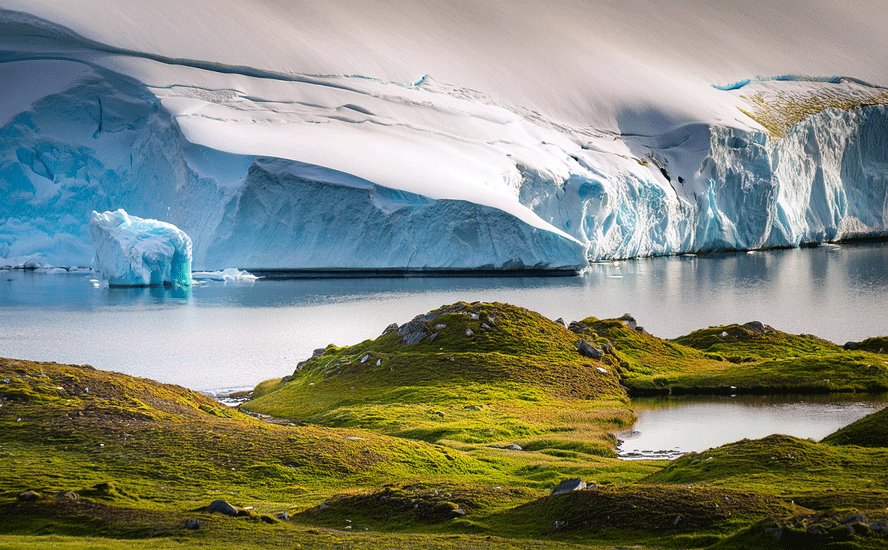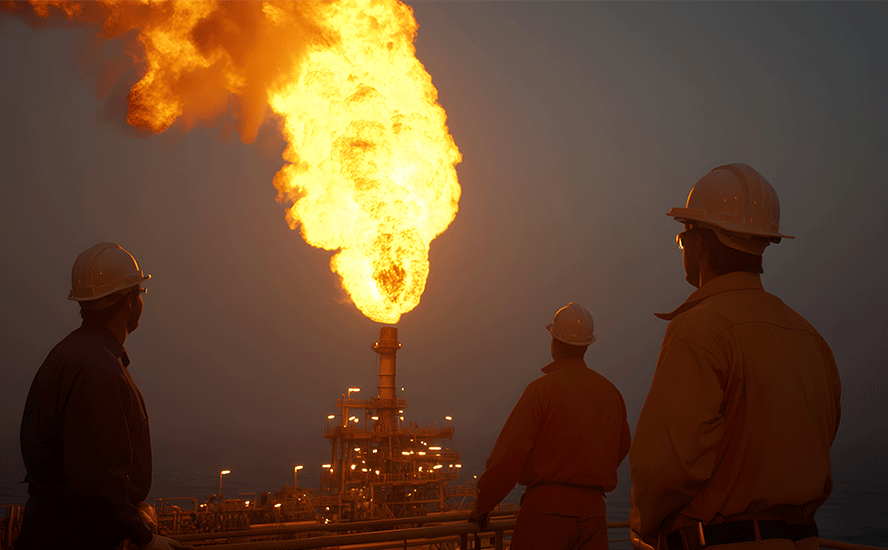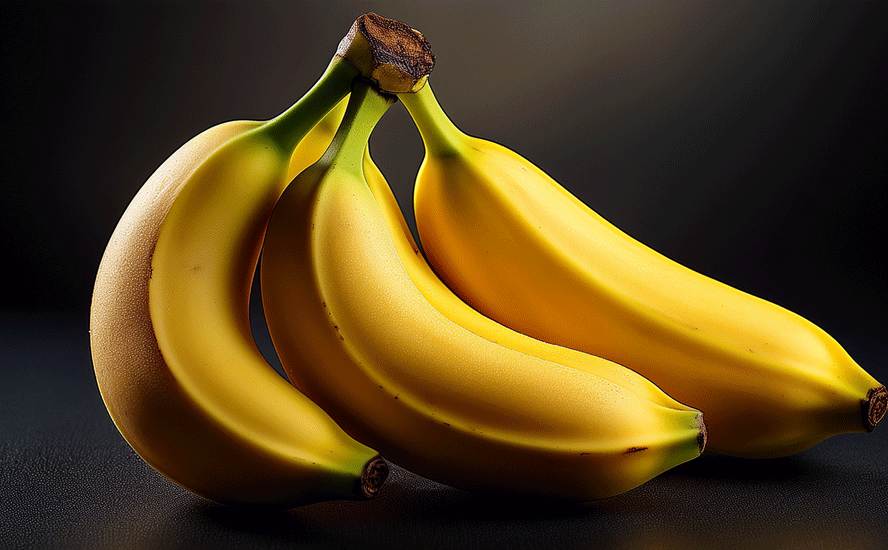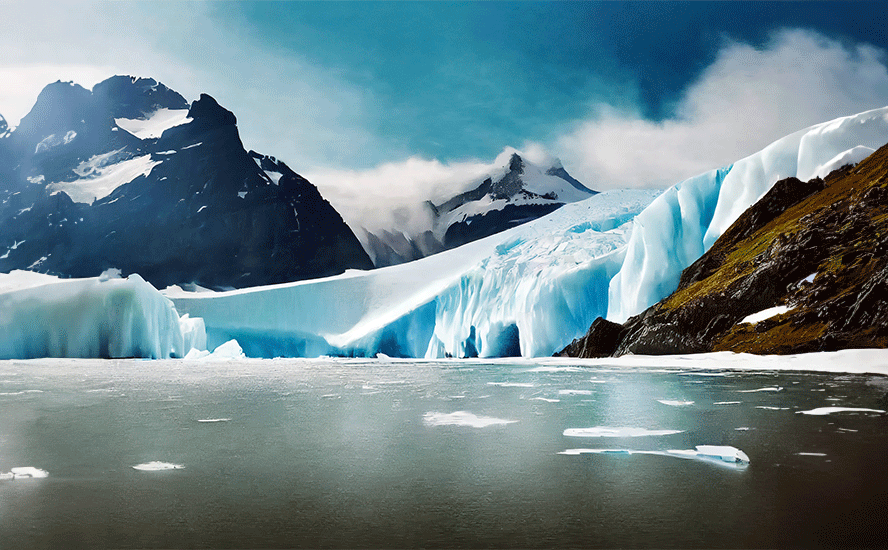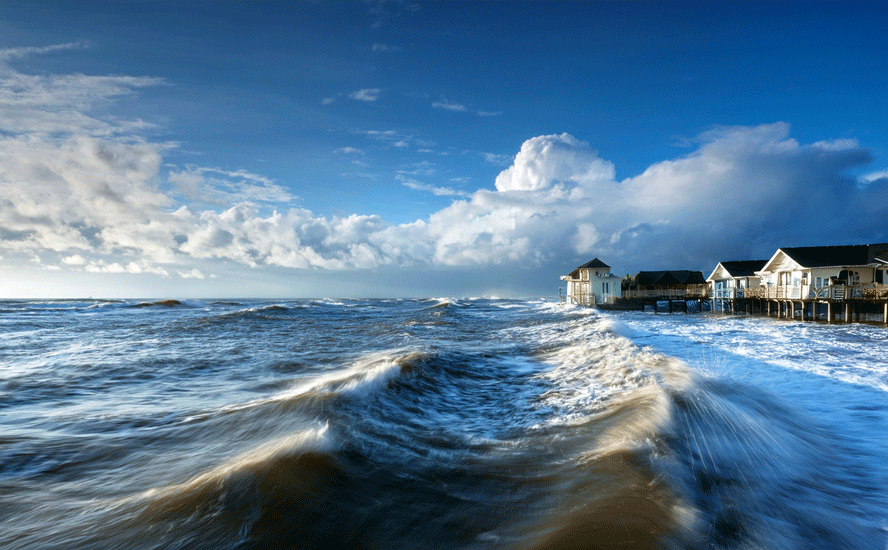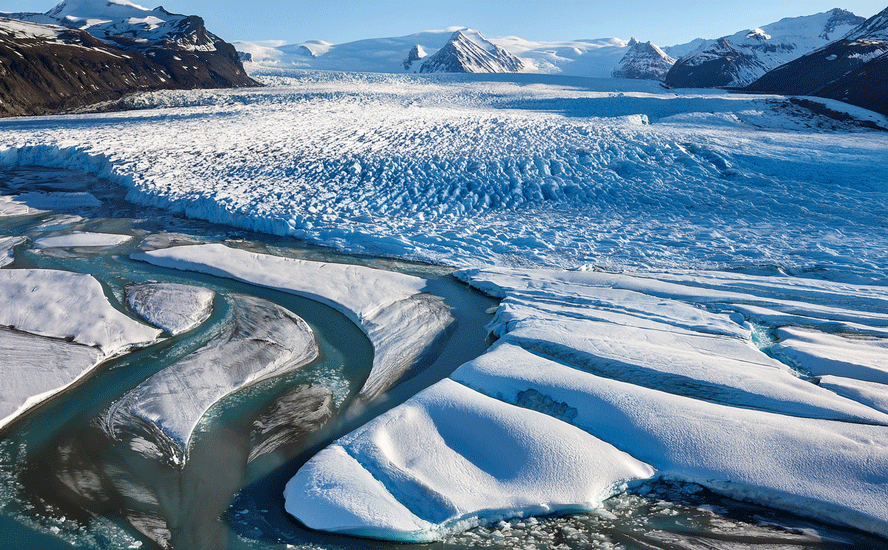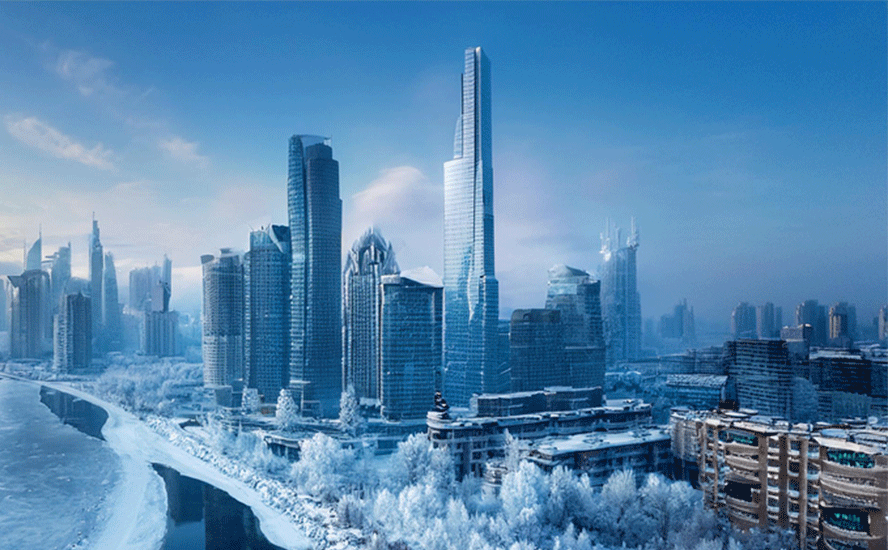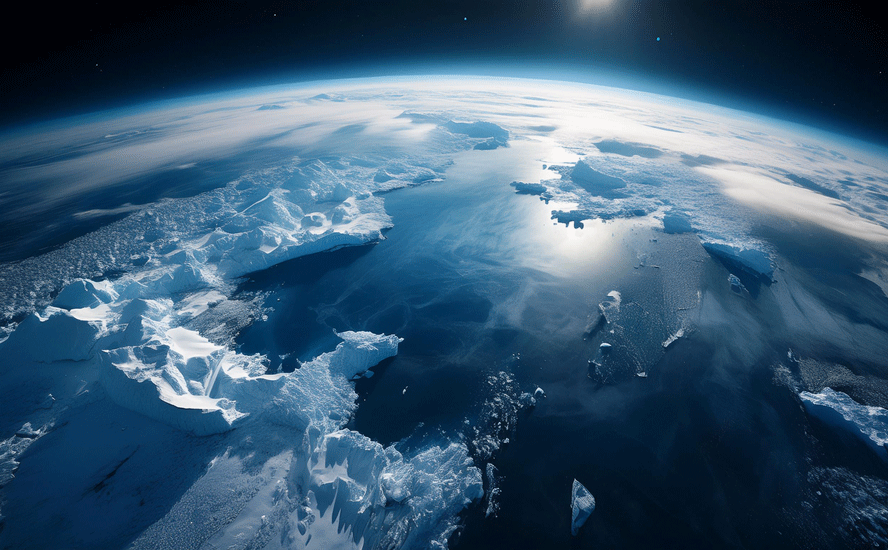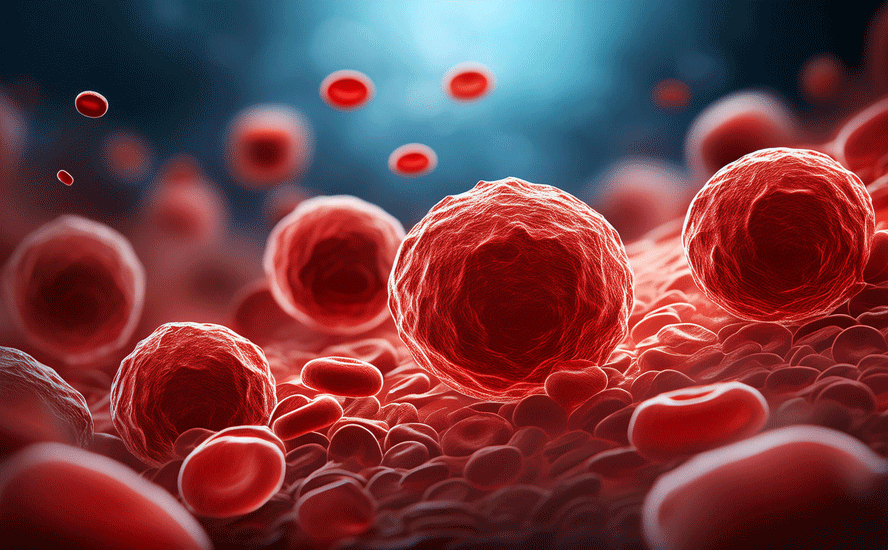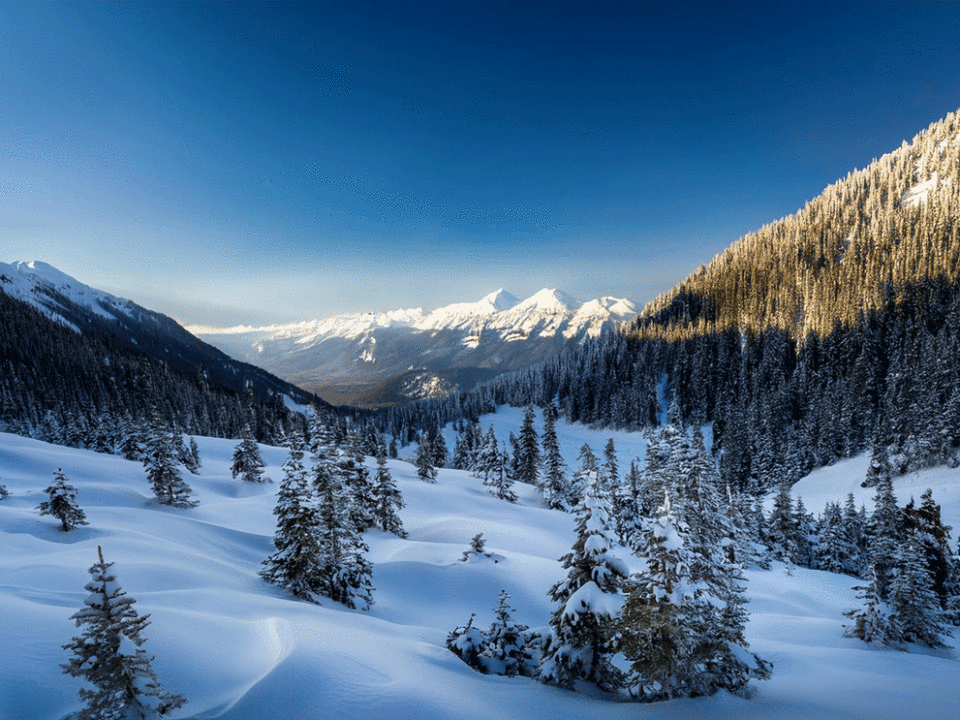Earth Overshoot Day

2017.05.27
The second half of the 20th century saw the biggest increase in the world’s population in human history. Our population surged because of:
- Medical advances lessened the mortality rate in many countries
- Massive increases in agricultural productivity caused by the “Green Revolution”
The global death rate has dropped almost continuously since the start of the industrial revolution – personal hygiene, improved methods of sanitation and the development of antibiotics all played a major role.
Green Revolution
The term Green Revolution refers to a series of research, development, and technology transfers that happened between the 1940s and the late 1970s.
The initiatives involved:
- Development of high yielding varieties of cereal grains
- Expansion of irrigation infrastructure
- Modernization of management techniques
- Mechanization
- Distribution of hybridized seeds, synthetic fertilizers, and pesticides to farmers
Tractors with gasoline powered internal combustion engines (versus steam) became the norm in the 1920s after Henry Ford developed his Fordson in 1917 – the first mass produced tractor. This new technology was available only to relatively affluent farmers and it was not until the 1940s tractor use became widespread.
Electric motors and irrigation pumps made farming and ranching more efficient. Major innovations in animal husbandry – modern milking parlors, grain elevators, and confined animal feeding operations – were all made possible by electricity.
Advances in fertilizers, herbicides, insecticides, fungicides and antibiotics all led to better weed, insect and disease control.
There were major advances in plant and animal breeding – crop hybridization, artificial insemination of livestock, growth hormones and genetically modified organisms (GMOs).
Further down the food chain came innovations in food processing and distribution.
All these new technologies increased global agriculture production with the full effects starting to be felt in the 1960s.
Cereal production more than doubled in developing nations – yields of rice, maize, and wheat increased steadily. Between 1950 and 1984 world grain production increased by over 250% – and the world added a couple billion more people to the dinner table.
The modernization and industrialization of our global agricultural industry led to the single greatest explosion in food production in history. The agricultural reforms and resulting production increases fostered by the Green Revolution are responsible for avoiding widespread famine in developing countries and for feeding billions more people since.
The Green Revolution helped kick start the greatest explosion in human population in our history – it took only 40 years (starting in 1950) for the population to double from 2.5 billion to five billion people.
We goosed agra machine’s growth and saved a billion people who birthed billions more.
Malthusian pessimism
“The power of population is indefinitely greater than the power in the earth to produce subsistence for man“. Thomas Robert Malthus
Malthusian pessimism has long been criticized by doubters believing technological advancements in:
- Agriculture
- Energy
- Water use
- Manufacturing
- Disease control
- Fertilizers
- Information management
- Transportation
would keep crop production ahead of the population growth curve. Malthus’s prediction hasn’t come true because, so far, rising agricultural yields have always outpaced population growth.
Norman Borlang, Father of the Green Revolution, is on record as saying if we did everything right the Earth has a human carrying capacity of 10 billion people.
Ester Boserup, an agricultural economist says don’t worry, that population growth is the driver of land productivity – our planet’s human carrying capacity is based on the capabilities of our social systems and our technologies more than environmental limits.
Ester’s downgrading of environmental limits to second place doesn’t give me much comfort moving forward. It seems a little shortsighted.
Population
In 1950 the world’s population stood at 2.52 billion people. Today there are over 7.5 billion of us living on Earth.
According to United Nations predictions humans could number 9.7 billion people by 2050, and over 11 billion by 2100.
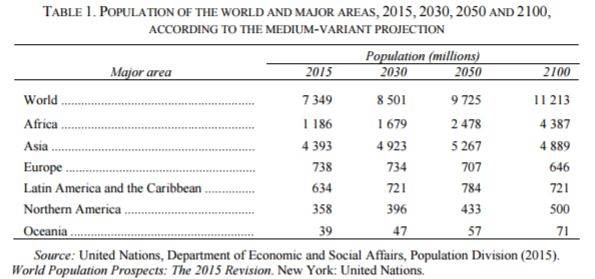
The earth might be big enough for one billion people, four billion maybe even eight or nine or even the 10 billion as Borlang believed. But the time is quickly coming when our sheer numbers will demand more than the earth can possibly supply.
Some say that number has already been surpassed.
Ecological Overshoot
For most of human history there is no doubt we were consuming resources at a rate far lower than what the planet was able to regenerate.
Unfortunately we have crossed a critical threshold. The demand we are now placing on our planets resources appears to have begun to outpace the rate at which nature can replenish them.
The gap between human demand and supply is known as ecological overshoot. To better understand the concept think of your bank account – in it you have $5000.00 paying monthly interest. Month after month you take the interest plus $100. That $100 is your financial, or for our purposes, your ecological overshoot and its withdrawal is obviously unsustainable.
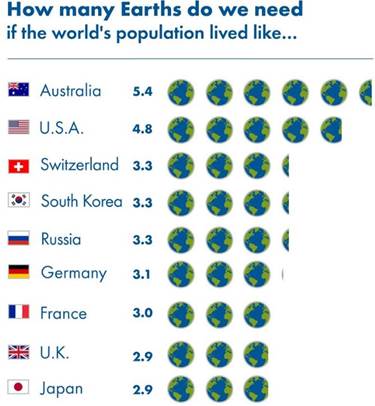 Humans are currently withdrawing more natural resources then our Earth bank is able to provide on a sustainable basis. How much more? At today’s rate of withdrawal we need just over another half earth. We’re on track to require the resources of two planets by 2050.
Humans are currently withdrawing more natural resources then our Earth bank is able to provide on a sustainable basis. How much more? At today’s rate of withdrawal we need just over another half earth. We’re on track to require the resources of two planets by 2050.
If today, everyone on earth were to start consuming the same amount of natural resources as the average Australian we’d need 5.4 planets, an ecological overshoot of 4.4 planets.
Earth Overshoot Day
According to the Global Footprint Network (GFN) August 8th was Earth Overshoot Day 2016 – the day when humanity exhausts our ecological budget, the day when our consumption exceeded the environment’s renewal capacity for the entire year.
The rest of the year we’re in ecological overshoot and we currently use the renewable resources of 1.6 Earths.
The date Earth Overshoot Day 2017 falls on will announced on May 22nd. The GFN predicts that by 2030, Earth Overshoot Day will be in June – meaning it will take two entire Earths to sustain our species’ consumption.
Loss of species
Every two years, Global Footprint Network, WWF, and the Zoological Society of London publish the Living Planet Report. The Living Planet Report 2016 (October) is an eye opener:
- The Global Living Planet Index shows a decline of 58% between 1970 and 2012 Trend in population abundance for 14,152 populations of 3,706 species monitored across the globe between 1970 and 2012.
- The terrestrial LPI shows a decline of 38% 1970 and 2012 Trend in population abundance for 4,658 populations of 1,678 terrestrial species monitored across the globe between 1970 and 2012
- The tropical forest species LPI shows a decline of 41 per cent 1970 and 2009 Trend in population abundance for 369 populations of 220 tropical forest species (84 mammals, 110 birds, 10 amphibians and 16 reptiles) monitored across the globe between 1970 and 2009.
- The grassland species LPI shows a decline of 18 per cent between 1970 and 2012 Trend in population abundance for 372 populations of 126 grassland species (55 mammals, 58 birds and 13 reptiles) monitored across the globe between 1970 and 2012.
- The freshwater LPI shows a decline of 81 per cent 1970 and 2012 Trend in population abundance for 3,324 populations of 881 freshwater species monitored across the globe between 1970 and 2012.
- The wetland dependent species LPI shows a decline of 39 per cent between 1970 and 2012 Trend in population abundance for 706 inland wetlands populations of 308 freshwater species (4 mammals, 48 birds, 224 fish, 4 amphibians and 28 reptiles) monitored across the globe between 1970 and 2012.
- The marine LPI shows a decline of 36 per cent between 1970 and 2012 Trend in population abundance for 6,170 populations of 1,353 marine species monitored across the globe between 1970 and 2012.
The Earth has gone through five major extinction events – from the Ordovician-Silurian (350 million years ago), to the Cretaceous-Paleogene (65 million years ago), in each event 70-90% of all species died.
The Anthropocene, or the age of the humans, is considered by scientists to be a 6th extinction event. That’s real bad news long before even 50% extinction – loss of species means loss of pollinators – which is a real problem since so many varieties, and so much of our food crops rely on insects (ie. bees) to pollinate.
The revolution wasn’t really green
The modern agricultural complex spawned by the Green Revolution may have allowed us to grow more food, but dependence on this high cost industrial input type of system extracts an extreme toll:
- Agricultural output did increase as a result of the Green Revolution, but the energy input to produce a crop increased faster – the ratio of crops produced to energy input has decreased. This is because High Yielding Varieties (HYVs) of seeds only outperform traditional varieties when adequate irrigation, pesticides and fertilizers are used
- Green Revolution agriculture produces monocultures of cereal grains. This type of agriculture relies on the extensive use of pesticides because monoculture systems – with their lack of genetic variation – are particularly sensitive to bug infestations
- The transition from traditional agriculture to GR agricultural meant farmers became dependent on industrial inputs – not made on the farm inputs. Farmers faced severely increased costs because they now had to purchase such items as farming machinery, fertilizer, pesticides, irrigation equipment and seeds
- The increased level of mechanization on larger farms removed a large source of employment from the rural economy. New machinery – mass produced gas tractors, large self propelled combines and mechanical cotton pickers – all combined to sharply reduce labor requirements
- Less people were affected by hunger and died from starvation – but many more are affected by malnutrition such as iron or Vitamin A deficiencies. Green Revolution grains do not have the same nutritional values as traditional varieties. The switch from heavily rotated multiple crops to mono cropping or dual cropping reduces total soil fertility and the nutritional value of our food
- The Green Revolution reduced agricultural biodiversity by relying on just a few varieties of each crop. The food supply could be susceptible to pathogens that cannot be controlled by agrochemicals
- Many valuable genetic traits, bred into traditional varieties over thousands of years, are now lost
- Wild plant and animal biodiversity was hurt because the Green Revolution expanded agricultural development into new areas where it was once unprofitable or too arid to farm
- The 20/80 phenomenon – the rapid increase in farm size and the concentration of production among large producers means 20% of producers generate 80% of the agricultural output
- As a result of modern irrigation practices, aquifers in places like India (once Borlaug’s greatest triumph) and the US mid west have become depleted. There are two types of aquifers: replenishable, most of the aquifers in India and the shallow aquifer under the North China Plain are replenishable – depletion means the maximum rate of pumping is automatically reduced to the rate of recharge. For fossil, or nonreplenishable aquifers – like the U.S. Ogallala aquifer, the deep aquifer under the North China Plain, or the Saudi aquifer – depletion brings pumping to an end. In the more arid regions like the southwestern United States or the Middle East the loss of irrigation water could mean the end of agriculture in these areas
- Green Revolution techniques rely heavily on chemical fertilizers, pesticides and herbicides, some of these are developed from fossil fuels which makes today’s agriculture regime much more reliant on petroleum products
- Farming methods that depend heavily on chemical fertilizers do not maintain the soil’s natural fertility and because pesticides generate resistant pests, farmers need ever more fertilizers and pesticides just to achieve the same results
- The increased amount of food production, and foods low price, led to overpopulation worldwide
I said earlier we currently use the renewable resources of 1.6 planets and that by 2030 we’ll use the renewable resources of two planets. We do that by agricultural inputs – the massive use of fertilizers, diesel, insecticides, pesticides, fresh water for irrigation etc.
Has anyone thought about the further effects on our environment of ramping up fertilizer, pesticide, insecticide and herbicide applications even further?
How about increasing use of pollution emitting fossil fuels and fresh water for irrigation to enable big agra to feed 2.2 billion more of us?
Have you thought about the effects of the existing billions of people (who don’t live even close to a western lifestyle) all wanting to live, or at least consume, like an American or Australian does? What happens when urbanization increases all the newly minted urbanites living standards and all those new consumers start to climb the protein ladder alongside the future 2.2 billion coming to the table?
It’s obvious the world needs a new farm – one the size of South Africa.
Unfortunately the UN also says that by 2030 an area twice the size of South Africa will become unproductive due to desertification, land degradation and drought.
Desertification
Desertification is a phenomenon that ranks among the greatest environmental challenges of our time, unfortunately most people haven’t heard of it or simply don’t understand it. Desertification doesn’t refer to the advance of deserts which can and do expand naturally.
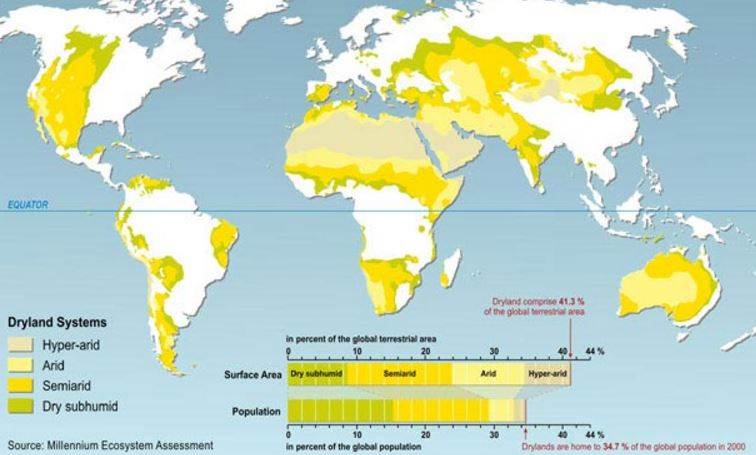
Desertification is a different process where land in arid or semi-dry areas becomes degraded – the soil loses its productivity and the cover vegetation disappears or is degraded to the point where wind and water erosion can carry away the topsoil leaving behind a highly infertile mix of dust and sand.
Desertification and land degradation is a global issue with desertification already affecting one quarter of the total land surface of the globe today
Today the pace of arable land degradation is estimated at 30 to 35 times the historical rate. Desertification is degrading more than 12m hectares of arable land every year – the equivalent of losing the total arable area of France every 18 months.
The issue of desertification is not new, it has constantly played a significant role in human history, even contributing to the collapse of the world’s earliest known empire, the Akkadians of Mesopotamia.
Climate change can accelerate and intensify the degradation process.
Climate Change
When Norman Borlang made his estimate of our planet’s human carrying capacity Climate Change was not the huge driver behind his modeling as it would have to be today.
According to science the world is going to continue to get warmer, polar ice caps will melt, so will the Greenland ice sheet and most glaciers. More sunlight will be absorbed by the Earth’s oceans, causing increased evaporation. Water vapor is a greenhouse gas and amplifies twofold the effects of other greenhouse gases. With Earth’s ice gone there will be significantly less sunlight reflected back into space, vast expanses of Arctic tundra will thaw releasing unbelievable amounts of methane, a greenhouse gas twenty times more potent then CO2.
The polar jet stream has already been altered, wide swinging north-south deviations (meanders) have become the norm – deviating far from its normal path and meandering north into Canada, the jet stream brings warm air while dipping far south over Europe, the polar jet stream brings record cold and snow.
Ocean currents will be altered further impacting our climate and sea levels will rise – coastlines will be flooded forcing mass migrations inland. Freshwater aquifers will suffer from saltwater intrusion, once habitable zones will become uninhabitable.
Because of increased average global temperatures the tropical rain belt will have widened considerably and the subtropical dry zones will have pushed pole-ward, crawling deep into regions such as the American Southwest and southern Australia, which will be increasingly susceptible to prolonged and intense droughts.
A report by the Intergovernmental Panel on Climate Change (IPCC) concluded that climate change will amplify extreme heat, heavy precipitation, and the highest wind speeds of tropical storms. Extreme weather events are going to happen with increasing frequency, the climate for the area you live in is, if it hasn’t started already, going to change. We are all watching and experiencing these events and changes in real time because changes that use to take tens and tens of thousands of years are now happening in decades.
Conclusion
We humans have been changing the world around us for tens of thousands of years. It’s pretty much what we do, we shape and we change the existing environment through design and then indifference to the results of our actions. One of the most basic, fundamental problems (other than the rapid depletion of our fresh water resources) we’ve created for ourselves is the impact of human activities on the land we need to cultivate for our very survival.
Our exploding population, our accelerating demand for the world’s treasures (it’s natural resources) our ‘who cares’ attitude towards pollution and habitat destruction are all increasing what were once tolerable pressures towards, and sometimes already beyond, the breaking point in ecosystems all over the world.
Are Norman and Ester right? Does population growth march lockstep into the future with technological advances keeping food production on the increase?
Were they correct in their Malthusian pessimism?
I don’t think so, but they might have been thinking about feeding you a diet of algae, jellyfish and tofu. Bon appetite.
Are food, fresh water and climate change on your radar screen?
If not, maybe they should be.
Richard (Rick) Mills
Richard lives with his family on a 160 acre ranch in northern British Columbia and is the owner of Aheadoftheherd.com.
Richard’s articles have been published on over 400 websites, including:
WallStreetJournal, USAToday, NationalPost, Lewrockwell, MontrealGazette, VancouverSun, CBSnews, HuffingtonPost, Beforeitsnews, Londonthenews, Wealthwire, CalgaryHerald, Forbes, Dallasnews, SGTreport, Vantagewire, Indiatimes, Ninemsn, Ibtimes, Businessweek, HongKongHerald, Moneytalks, SeekingAlpha, BusinessInsider, Investing.com, MSN.com and the Association of Mining Analysts.
Sign up for Ahead Of The Herd’s free highly acclaimed newsletter..
***
Legal Notice / Disclaimer
This document is not and should not be construed as an offer to sell or the solicitation of an offer to purchase or subscribe for any investment.
Richard Mills has based this document on information obtained from sources he believes to be reliable but which has not been independently verified.
Richard Mills makes no guarantee, representation or warranty and accepts no responsibility or liability as to its accuracy or completeness. Expressions of opinion are those of Richard Mills only and are subject to change without notice. Richard Mills assumes no warranty, liability or guarantee for the current relevance, correctness or completeness of any information provided within this Report and will not be held liable for the consequence of reliance upon any opinion or statement contained herein or any omission.
Furthermore, I, Richard Mills, assume no liability for any direct or indirect loss or damage or, in particular, for lost profit, which you may incur as a result of the use and existence of the information provided within this Report.
Legal Notice / Disclaimer
Ahead of the Herd newsletter, aheadoftheherd.com, hereafter known as AOTH.Please read the entire Disclaimer carefully before you use this website or read the newsletter. If you do not agree to all the AOTH/Richard Mills Disclaimer, do not access/read this website/newsletter/article, or any of its pages. By reading/using this AOTH/Richard Mills website/newsletter/article, and whether you actually read this Disclaimer, you are deemed to have accepted it.

